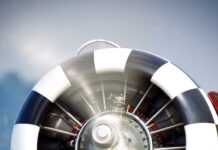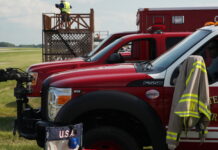It is a truism in the air show business: “If you haven’t done it somewhere else, don’t do it here.” But in our collective eagerness to entertain audiences and add a little “something extra,” we frequently ignore that truism. And, it’s now clear that these “nice gestures” are likely both a violation of FAA guidance and an unnecessary safety hazard.
In volume 3, Chapter 6 of FAA Order 8900.1, Paragraph 3-145 (D), the requirements for pilots flying formation aerobatics together are specified: Either, the pilots must have flown ten aerobatic performances together within the last twelve months or they must be able to document 30 aerobatic practice sessions together during the preceding twelve months. Elsewhere in 8900.1, formation aerobatics are defined as flying aerobatics within 500 feet of another aircraft. It is not enough that each pilot has a formation aerobatics endorsement on their SAC cards; they must have an extensive and documentable record of recent practices and/or performances together.
It is not uncommon for an event organizer looking for an extra mini-act to ask two or more pilots to fly a “squirrel cage” act with one another. And, from time to time, two solo pilots who are comfortable with one another might offer to fly a three-minute “opposing solo” type act as a “teaser” in the early part of an air show schedule. No matter the experience level of the participating pilots, this is a violation of FAA guidance and the possible source of an enforcement action unless the participating pilots have met and can document the requirements of Paragraph 3-145 (D). As recently as this week, ICAS checked with the appropriate regulators to confirm this point: a squirrel cage demonstration is formation aerobatics and is subject to the same restrictions and requirements as other formation aerobatic air show performances, including the practice requirements.
As benign as they might seem, these kinds of semi-impromptu performances are also a violation of one of the central tenets of air show safety: don’t do anything at the show that you haven’t practiced extensively before arriving at the show.
For event organizers: Requests for impromptu multi-ship performances are a bad idea unless you are very sure that the pilots fly them on regular basis. And, if you’re not sure if they do, they probably don’t.
For pilots: Whether you suggest it yourself or you are approached by another pilot or requested by an air boss or event organizer, squirrel cage additions to your performance schedule can be both a regulatory and safety hazard. If you’re not absolutely sure that you’ve met the regulatory requirements to do it, you probably haven’t and you probably shouldn’t agree to participate in one at a show. And remember: when regulatory authorities become involved, pilot-in-command is pilot-in-command. Period.








